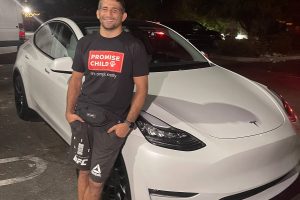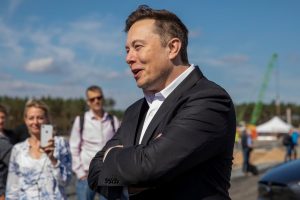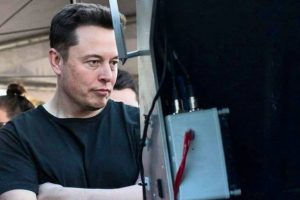The Tesla road trip story has become a popular literary genre. You can find a couple dozen examples here in this column, and there are hundreds more videos and articles out there — new ones appear every week.
Tesla Superchargers and various other public charging options are becoming more numerous, and an EV road trip isn’t the trailblazing adventure that it was a few years ago. However, those who venture away from metro areas and major highways can easily find themselves far from the nearest public charger — or worse, sitting with a drained battery at a charging station that’s out of order or occupied.
Sometimes you have to get creative to stay on the road, and some drivers enjoy the thrill of the charging chase. Brad Templeton, writing in Forbes, shares some interesting tips and observations about his charging experiences.
Templeton carries Tesla’s CHAdeMO adapter, which comes in very handy in regions where Superchargers are few, as was the case in British Columbia, where he made his latest road trip. Electrify America and other fast charging networks are planning to phase out CHAdeMO chargers in favor of CCS, but CHAdeMO ports will be around for the foreseeable future. There is now a third-party CCS-Tesla adapter available as well, but it’s pricey, and early reviews have been mixed. Meanwhile, at least one non-Tesla charging network, EVgo, has been adding Tesla connectors to some of its stations.
How all of this will eventually shake out is anybody’s guess, but any serious road-tripper will want to have not only the CHAdeMO adapter but a full assortment of plug adapters in their toolbox, in case you need to charge at someone’s house, or an even weirder location. EVANNEX sells a full line of UL-certified adapters, including plug adapters for all types of 240-volt household outlets and RV power hookups, as well as heavy-duty extension cables.
One complaint often heard about highway chargers is that they tend to be located next to fast-food joints, not nice restaurants. Brad has found an elegant workaround — he carries a folding table and chairs so that he can get a takeout meal at an eatery of his choice and sit and eat in a civilized manner while waiting to charge. If you don’t have the space to carry a table, look for a charger at a rural rest stop, many of which have picnic tables.

True Tesla road warriors know the ins and outs of RV power hookups. These are found at campgrounds, RV parks, and a few hotels. “Some RV spots have a 50-amp plug, which delivers the fastest charging you are likely to get on a Level 2 charger for those who bring the right adapter,” Templeton explains. “More common, unfortunately, is the 30-amp TT-30 RV plug, which is good for about 100 miles in a 10-hour overnight stop.”
A TT-30 socket can save you in a pinch, but there’s a trick to using it — you need a special adapter that lets you dial down the current, otherwise your Tesla will try to draw more than 30 amps, and blow the breaker.
Templeton tells us that the best possible way to charge is overnight at a hotel. It takes no time or effort beyond the few seconds it takes to plug in, slow charging is better for your battery, and it’s usually free. An increasing number of hotels offer free Level 2 charging as an amenity, and considering the convenience and the reduced wear on your battery, it’s well worth seeking one out.
Even if a hotel has no EV chargers, you can often find an outdoor 120-volt plug and do a Level 1 trickle charge — be sure to carry a long, heavy-duty extension cord with you. This method of charging is so slow that even an overnight charge won’t completely replenish your battery, but it’s always worth getting a little extra top-up, which could save you a few dollars at the next DC fast charging stop. “Adding 50 miles from a standard plug saves you 15 minutes at a CHAdeMO charger, and perhaps 6 at a Supercharger,” Templeton writes.
Everybody seems to want charging to be faster, but Templeton points out that, in a sense, today’s Superchargers are already too fast. “Fast chargers want to cycle people through quickly, and so they usually insist you unplug and move as soon as you are done, even if you are still in the middle of dinner,” he writes. Some of the newest chargers, such as ABB’s Terra 360, come with multiple cables and power-sharing features, so that two or more cars can plug in and be charged in sequence — this could relieve some of the pressure to charge and run.





